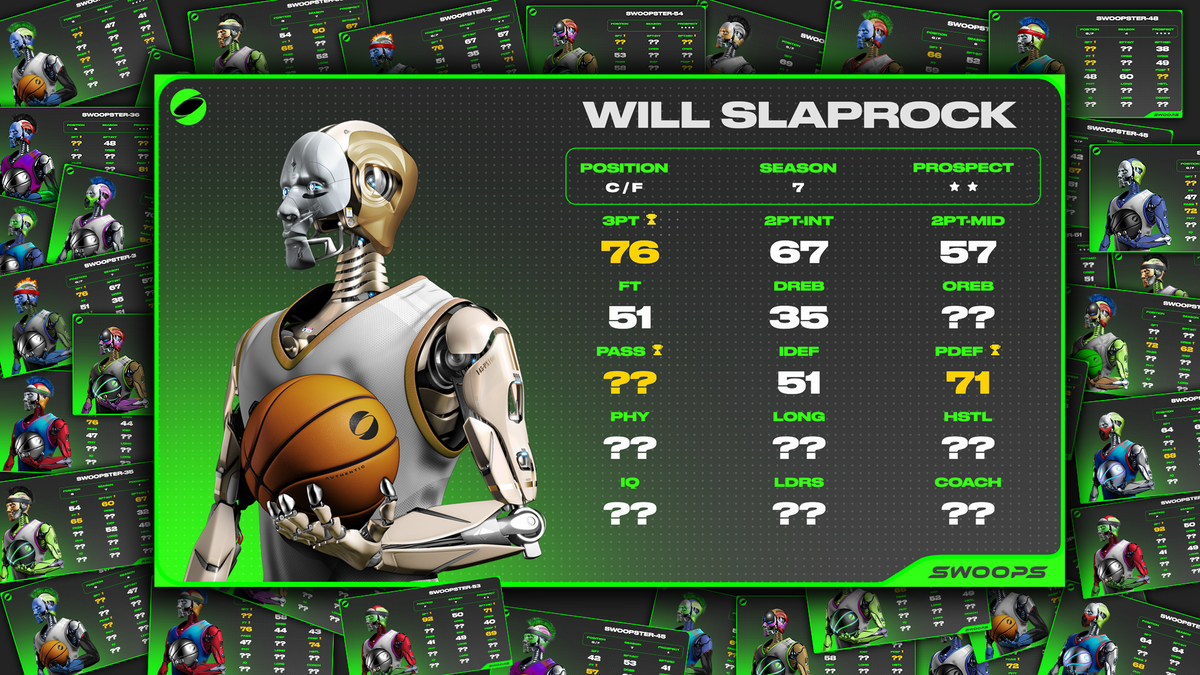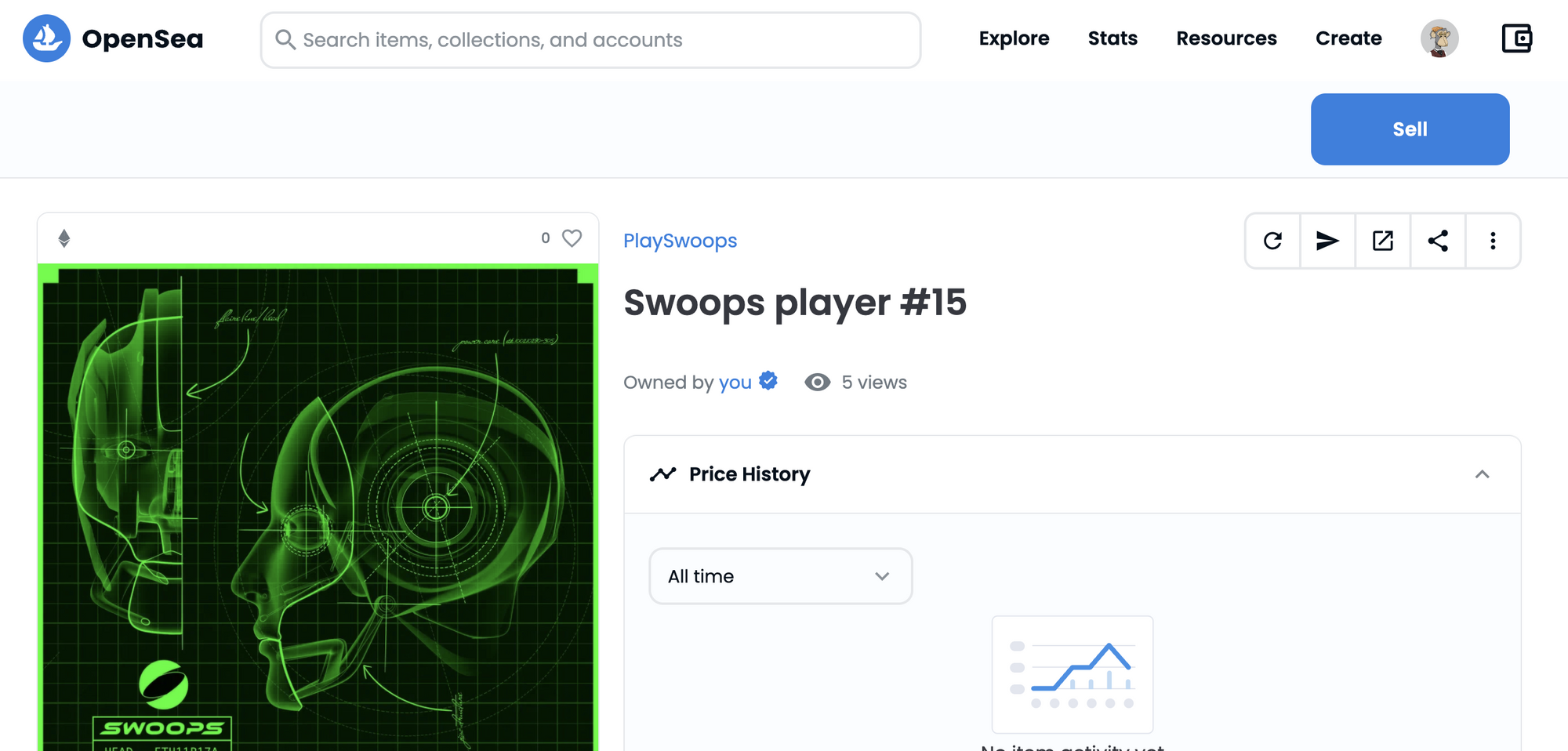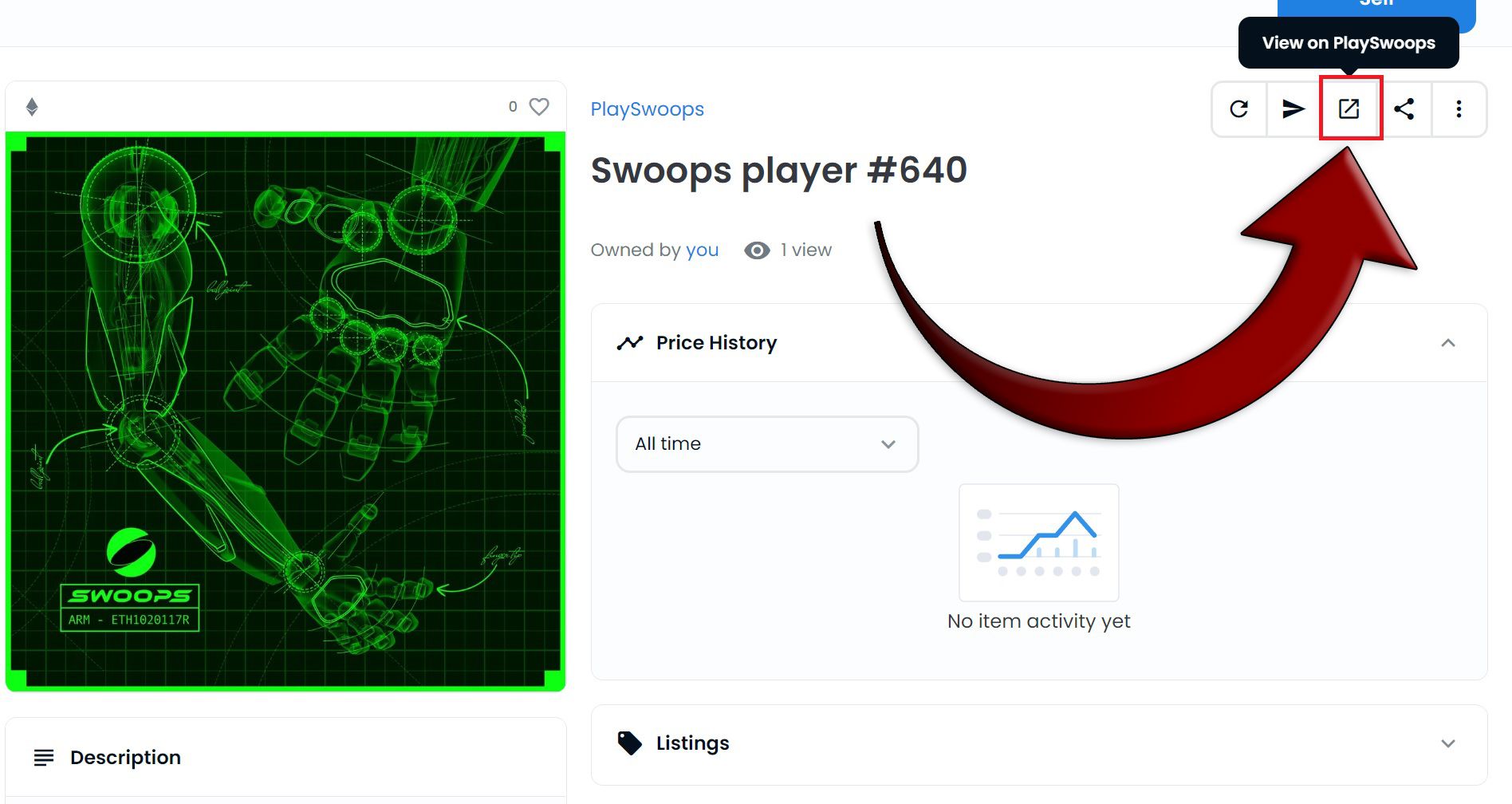Swoops 101 | Understanding Your Player

Overview
Each Swoopster is a unique, finely-tuned combination of hardware and software. Created and operated by humans, they are engineered to be superior athletes — with a single purpose: dominate in the basketball game known as Swoops.
Swoops and the players at the center of the game are as complex and layered as their human athlete counterparts that came before them. As an owner, if you wish to compete at the highest levels, it is imperative to understand everything about the Swoopsters. Consider this your crash course on your Swoopsters, broken down into the relevant categories.

Age/Name/Position
Every Swoopster is forged in the Swoops Factory and is given an identifier at ‘birth’ in the following naming convention: Swoopster#0001. In the near future, you’ll be able to assign your player a new name of your choosing. This is irreversible and will stick with the Swoopster even through transferred ownership, so choose wisely.
Each Swoopster also has an assigned ‘Position’, which not only may give an indication of the player’s style but also determines where they can play in a lineup. Every 5-player lineup consists of two guards, two forwards, and one center. Currently, players cannot play out of position so positional diversification will be important. Swoopsters will either be a guard, forward, center, or a combination of two or three positions (e.g. G/F or F/C). A Swoopster with such multi-positional eligibility can be played at either position, enhancing its value.
Like their human predecessors, Swoopsters age and gain experience, affecting their underlying skills and performance (more below on “Player Development”). All future drops will be of Rookie Swoopsters, coming in with 1 year of experience. Every Swoops season (3 months of human earth time), they age one more year. For our Genesis drop on September 29, 2022, the drop will consist of veterans with 2 to 7 years of experience.
Prospect Ratings
Similar to scouts evaluating real-life athletes, Swoops applies a schema to grade its players’ potential coming into the league, portrayed with a 1 through 5 star system, with 5 being the highest rating.
Star ratings signify what players are projected to ultimately achieve in the league and serve as proxies for their potential to improve. The tier classification is as follows:
- 5 Star: Potential generational superstar or high-floor, high-ceiling player.
- 4 Star: High-level starter with hints of franchise-altering potential.
- 3 Star: Solid medium-level starter.
- 2 Star: Low-floor, medium-ceiling rotation player.
- 1 Star: Trying-to-crack-the-rotation role player.
Because ratings are set when players initially enter the league, they are an imperfect indicator of future performance. Many variables must align for players to realize their true potential: coaching, training, system fit, luck, etc. Note: Prospect Ratings will never change once set.
Some are fast fliers. Some are straightforward and steady. Some show glimmers of greatness but fizzle out. And others appear unremarkable but are late bloomers. The ratings frame the projected ceiling and floor of players. They also impact how much skill progression occurs following each season.
But just like with humans, Swoopsters are imperfect machines, and raw potential does not necessarily equate to performance. There will be 5-star busts, 1-star overachievers, and everything in between.
Rarities of Prospect Ratings:
- 5 Star: 5%
- 4 Star: 10%
- 3 Star: 25%
- 2 Star: 30%
- 1 Star: 30%
Skills
The DNA of a Swoopster includes 15 skill attributes that help determine performance on the court. These include: 3PT shooting, 2PT midrange shooting, 2PT interior shooting, FT shooting, offensive rebounding, defensive rebounding, passing, interior defense, perimeter defense, physicality, hustle, basketball IQ, longevity, leadership, and coachability.
Some of these are self-explanatory while some are more nuanced. It’s up to the owners to figure out how they all interact and how they impact a player’s value. Each rating operates on a 30 to 100 scale with 100 always being “the best.”
To make matters a bit more complicated (and fun), owners will realize that most Swoopsters do not have all 15 skill ratings revealed. In fact, rookie Swoopsters come in with only one skill revealed and 14 unrevealed. Unrevealed skills are displayed as ??. You’ll have to play the player in some games to get a feel for the type of player and how good they are. More below on “Player Development,” but the short version is that for every year of experience, one additional skill will reveal. So a 3-year veteran, for example, will have 3 skills revealed, and a 7-year veteran will have 7 skills revealed.
You will also notice that every Swoopster has three skills that are colored Gold with a small trophy next to the respective skill. This indicates that these attributes, which can be revealed or unrevealed, are currently one of the top three skill ratings for that player. This is valuable information to start to put together the puzzle that is a Swoopster.
These “top 3 skills'' are also displayed on the front of the card, as seen below.
Aging and Player Development
When a player is created, it is assigned a unique development curve as part of its DNA. At the end of each season (13 weeks long), every Swoopster ages one year, leading to two major events. First, one additional attribute will reveal. Second, all attributes, whether revealed or unrevealed, will progress along that player’s unique arc. Depending on a player’s age, prospect status, in-game utilization, and other factors, some may improve while others decrease. You may have a very different Swoopster in your Locker Room heading into next season.
Visual Attributes
Swoopsters are molded from an assortment of materials in a variety of designs, all within a rarity schema. Currently, the visual attributes do not affect on-court performance, but there are some interesting ideas on how to make them more relevant moving forward. Act accordingly.
The Reveal
On Reveal Day, the metadata on your NFT will get updated, and you’ll see much of the information above. However, because of the limitations of OpenSea and similar marketplaces, you will likely want to go to the Player’s profile page inside the Swoops game. You can do so directly from the OpenSea page on the top right. It is here that you will see the entire Player Card graphic, likely the easiest place to see everything valuable at once (and perfect for sharing).

